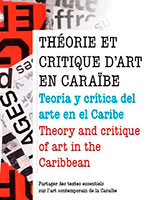 Browse
BrowseArrested Transmission: Art that Stays at a Global Periphery I Leon Wainwright
Key words: art, Caribbean, web, online, reception, United States, Alicia Alleyne, Carl Anderson, painting
Abstract
A pattern has emerged in recent years not only of new art coming to the United States from the Caribbean, but a migration of a kind by artists from all over the region. The Caribbean and the United States share a distinctively relational geography that has tempted some Caribbean artists to stake almost everything on the power of the web, leading to a form of practice that operates almost entirely in a digital register. Tackled in this article are the alternatives to this trend, which highlight some counter responses among artists (Alicia Alleyne of Barbados; and Carl Anderson of Guyana) to the challenges of trying to meet with a spectrum of public attention that slides along a scale from local (Caribbean) contexts of exhibition display, to more global modes of reception by means of the internet.
Contextualisation :This essay speaks to and from art historical analysis of the contemporary Caribbean. It outlines a critical argument about the limitations of web-based encounters with the region’s art, balanced against the wide enthusiasm surrounding the digital presentation of artworks and the new opportunities for artists to become ‘visible’ outside the Caribbean.
Leon Wainwright
Leon Wainwright is Reader in Art History at The Open University, UK and author of the book ‘Timed Out: Art and the Transnational Caribbean’ (Manchester University Press, 2011).
Read the full text on the web site of AICA :
http://aica-sc.net/2014/11/27/arrested-transmission-art-that-stays-at-a-global-periphery/
Articulos en espanol :
http://aica-sc.net/2014/11/27/transmision-detenida-arte-que-permanece-en-una-periferia-global/
Full text in French
 Browse
Browse